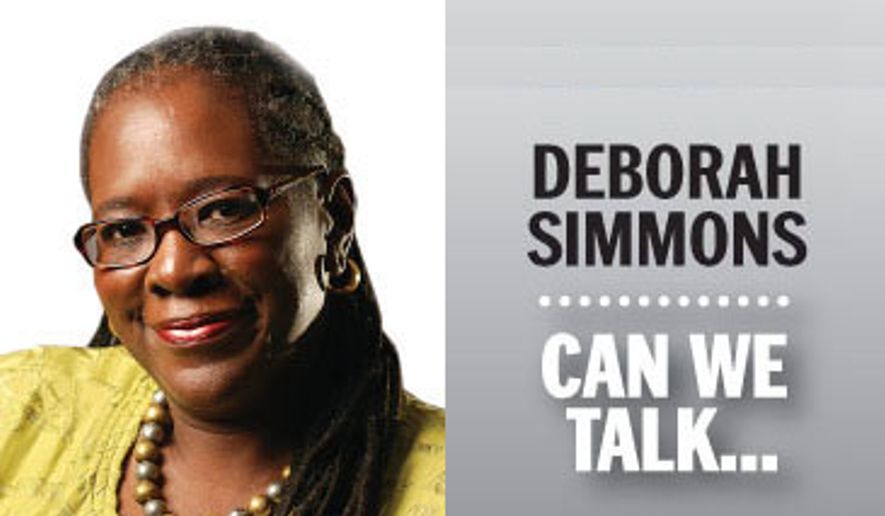ANALYSIS/OPINION:
Is community policing what we think it is supposed to be?
The U.S. Justice Department on Monday doubled down on the number of cities cloaked in its coast-to-coast Violence Reduction Network.
At issue is whether America is moving toward a nationalized police state or a decentralized form of policing.
Neither Baltimore, which remains under a national microscope since riots erupted this spring following Freddie Gray’s death, nor D.C., whose homicide rate has topped last year’s, is on the list of 10 cities. The list includes two Arkansas cities, two New Jersey cities, two Michigan cities and three localities in California — Compton, Oakland and Richmond.
The news came the same day the FBI released its annual crime stats: There were 444 “justifiable homicides” by law enforcers in 2014, a 5.7 percent decrease compared to the 471 logged in 2013. Local and state agencies voluntarily submit their data.
SEE ALSO: Hearing will set order for six Baltimore police trials
That the “winning” cities chosen by the Justice Department are in what political consultants used to label “blue” states is no surprise. Chicago Mayor Rahm Emanuel, Detroit Mayor Mike Duggan and the Democratic political machine in Newark, New Jersey, may not have lost considerable sleep over their respective crime spikes, but they are hoping their constituents will at least feel safe enough to lay their heads down at night (before heading to the polls on Election Day).
It’s been really tough in and around America’s top urban areas, especially when homicide is the cause of deaths. Killings in Baltimore and D.C. have outpaced those in 2014, with a full three months to go before we ring out 2015. D.C. hit 116 killings over the weekend, and Charm City’s website said it had 246 as of Sept. 24.
President Obama promised last year to get a handle on violence and crime prevention efforts with his Task Force on 21st Century Policing. He created the panel by executive fiat, and the panel immediately zeroed-in on policing. This year saw funding the five inaugural localities — Chicago; Detroit; Wilmington, Delaware; Camden, New Jersey; and Oakland-Richmond, California.
One of the inaugural members is task force co-chair Laurie Robinson, a professor of criminology, law and society at George Mason University and a former assistant attorney general with the Justice Department’s Office of Justice Programs. She reportedly has called the FBI data flawed and unreliable.
“There is a lag in the reporting of the data,” the Guardian.com quoted Ms. Robinson as saying. “The public and professional consciousness on these issues really has occurred in 2015, even though Ferguson occurred in 2014. So I’m not sure that one would expect there would be a dramatic change in behavior in law enforcement in the last couple of months in 2014.”
She also said that while FBI Director James Comey is correct in his assessment that the FBI needs to collect additional data, “we’re still at the mercy of having embraced this very, very decentralized state and local law enforcement system. I’m not criticizing it; it’s just what we have.”
SEE ALSO: Elijah E. Cummings, congressman, champions universal health care
As in politics, all crime is local. People pack their families in SUVs when violence overwhelms, and they seek more peaceful climes when law enforcers do not appear to know how to prevent it.
As things now stand, police departments are trying to figure whether they want to police themselves by adding tools such as body cameras. The temptation is to move forward since the federal government is enticing them to do so with $23.2 million in federal grants. (D.C. got $1 million.)
But what happens when your town or city does not get a piece of the federal pie? Who foots the bill?
Explains an Associated Press story, dateline Indianapolis: “The Indianapolis Police Department is downsizing plans to equip all 900 patrol officers with body cameras after the city failed to win federal grants to buy the wearable devices.
“Mayor Greg Ballard’s 2016 budget proposal relied heavily on federal grants for the cameras, but the city wasn’t awarded any funding for that purpose when the Department of Justice announced $23.2 million last week for 73 agencies. Indianapolis was among more than 200 police agencies that applied for but did not receive grants for the cameras that officers wear on their uniforms to record interactions with citizens,” the AP reported.
There are other issues as well: Will the federal government keep a national database? What happens to video recorded in cross-jurisdiction situations? Can a local, off-duty officer record another officer’s on-duty activities? How long should the tapes be held?
New policing techniques aren’t necessarily being guided by local communities alone as the government’s sleight-of-hand proved in Indianapolis. See, in order to get the public dollars for the body cameras, your jurisdiction has to prove to the feds that your city has a data storage plan, a training plan and a 50-50 match for funding. Miami and Phoenix also have agreed to work with research institutions to examine citizens’ police complaints and internal police probes.
So what’s the real end game? The Obama administration said it is trust and respect between community and police. It appears both are going to be tossed aside for a nationalized police state.
I question whether this is the method of community policing urban Americans really and truly want.
• Deborah Simmons can be reached at dsimmons@washingtontimes.com.
• Deborah Simmons can be reached at dsimmons@washingtontimes.com.




Please read our comment policy before commenting.